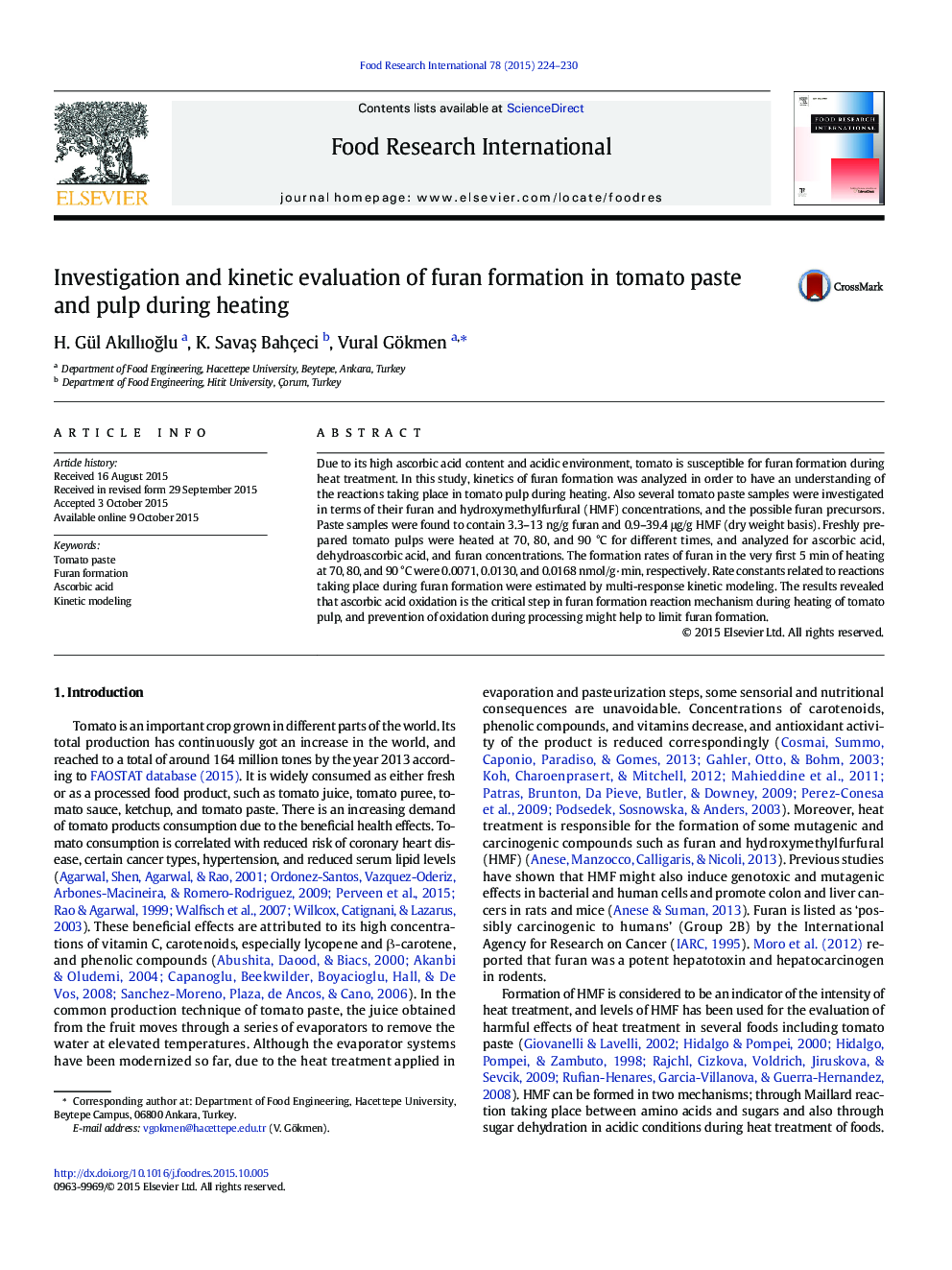| Article ID | Journal | Published Year | Pages | File Type |
|---|---|---|---|---|
| 4561313 | Food Research International | 2015 | 7 Pages |
•Furan formation in tomato pulp and paste during heating was investigated.•Ascorbic acid was the most susceptible precursor of furan in tomato pulp.•Kinetics of furan formation was analyzed by multi-response modeling.•Oxidation is the critical step in furan formation mechanism in tomato pulp.
Due to its high ascorbic acid content and acidic environment, tomato is susceptible for furan formation during heat treatment. In this study, kinetics of furan formation was analyzed in order to have an understanding of the reactions taking place in tomato pulp during heating. Also several tomato paste samples were investigated in terms of their furan and hydroxymethylfurfural (HMF) concentrations, and the possible furan precursors. Paste samples were found to contain 3.3–13 ng/g furan and 0.9–39.4 μg/g HMF (dry weight basis). Freshly prepared tomato pulps were heated at 70, 80, and 90 °C for different times, and analyzed for ascorbic acid, dehydroascorbic acid, and furan concentrations. The formation rates of furan in the very first 5 min of heating at 70, 80, and 90 °C were 0.0071, 0.0130, and 0.0168 nmol/g·min, respectively. Rate constants related to reactions taking place during furan formation were estimated by multi-response kinetic modeling. The results revealed that ascorbic acid oxidation is the critical step in furan formation reaction mechanism during heating of tomato pulp, and prevention of oxidation during processing might help to limit furan formation.
